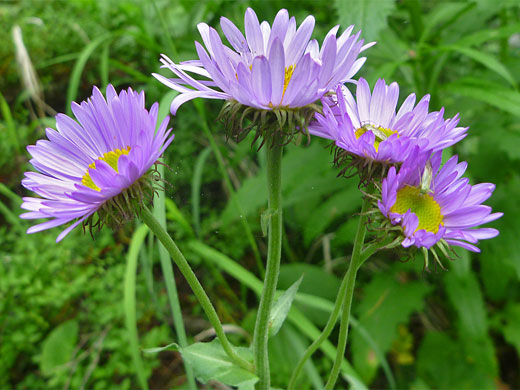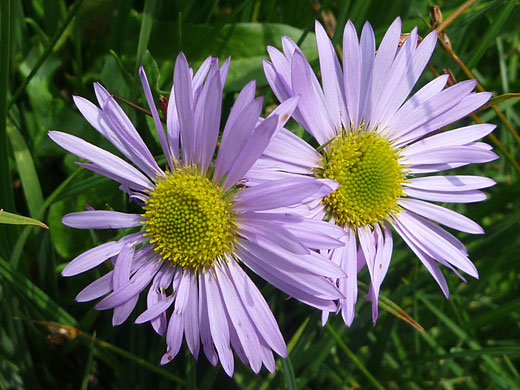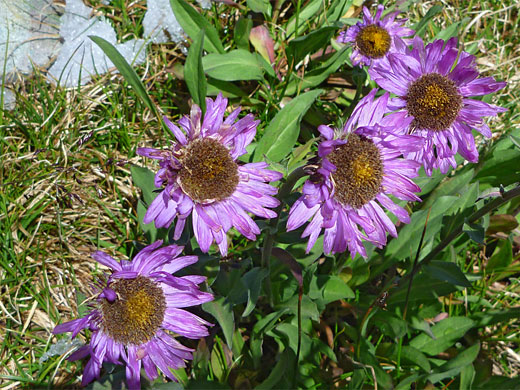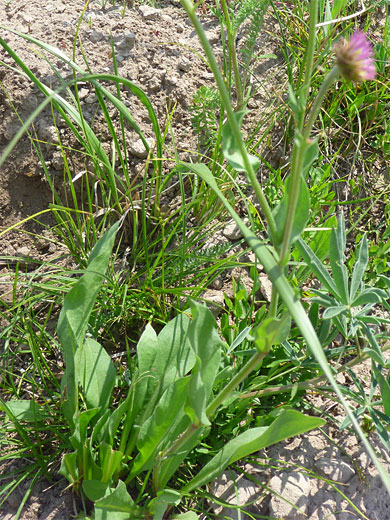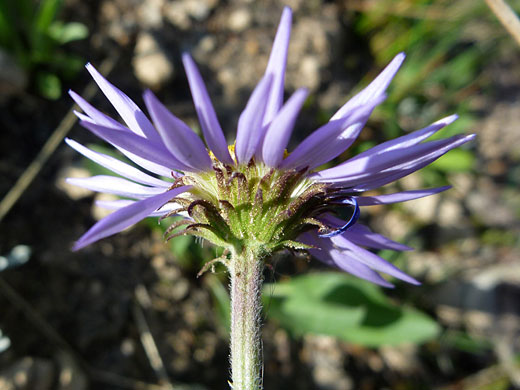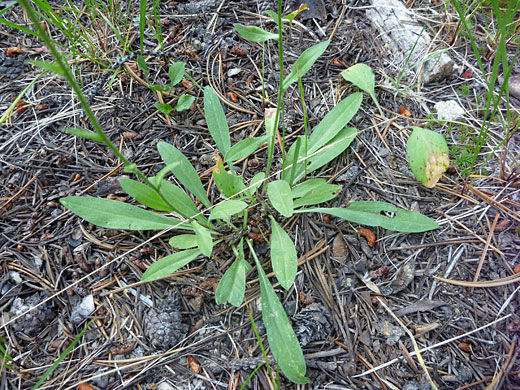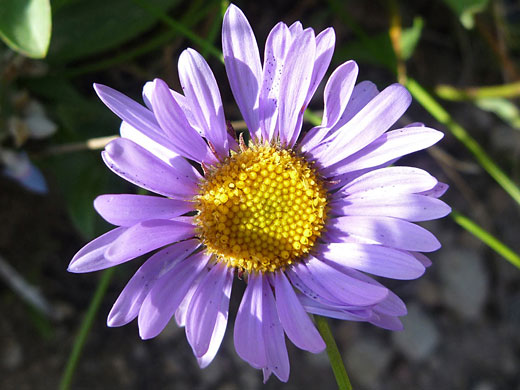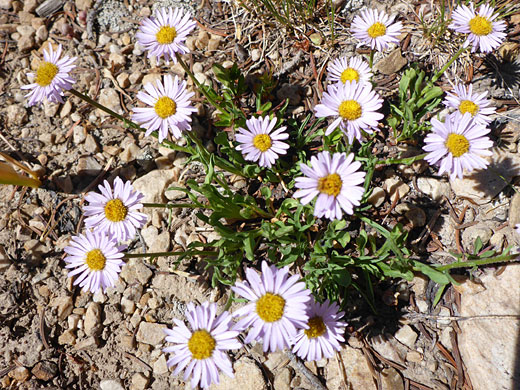
Flower of erigeron peregrinus (subalpine fleabane) with many pale purple petals, Yellowstone National Park
Common names:
Subalpine fleabane, wandering daisy
Family:
Scientific name:
Erigeron peregrinus
Synonym:
Erigeron glacialis
Main flower color:
Range:
The Pacific and Rocky Mountain states, plus Nevada
Height:
Up to 30 inches
Habitat:
Moist locations in mountains; meadows, hillsides, light woodland; 3,000 to 10,000 feet
Leaves:
Variable; tapered at the base, becoming lanceolate, spatulate or ovate, up to 7 inches long. Upper leaves are much smaller, and often clasp the stem. Alternate
Season:
July to August
The 30 to 80 lavender-pink ray florets of erigeron peregrinus are noticeably wider than other species in this genus, and are tapered; narrow at the base becoming widest towards the tip. The yellow center is formed of many tiny disc florets, which become elongated when mature. Leaves are variable in appearance and shape, ranging from linear to broadly ovate, and usually have a covering of fine hairs.
Flowers are supported by several rings of long, thin, greenish, red-tipped phyllaries, sticky to the touch (glandular - with tiny hairs along their surface). They curl outwards and backwards, and can sometimes be seen from the top of the flower, between the petals. The plant spreads from the root system and can form dense colonies covering many square feet.
Two varieties are the widespread var peregrinus, which has hairy phyllaries and pink to purple ray florets, and var thompsonii (only in Washington), which has almost or totally hairless phyllaries, and white ray florets.
Flowers are supported by several rings of long, thin, greenish, red-tipped phyllaries, sticky to the touch (glandular - with tiny hairs along their surface). They curl outwards and backwards, and can sometimes be seen from the top of the flower, between the petals. The plant spreads from the root system and can form dense colonies covering many square feet.
Two varieties are the widespread var peregrinus, which has hairy phyllaries and pink to purple ray florets, and var thompsonii (only in Washington), which has almost or totally hairless phyllaries, and white ray florets.
All Contents © Copyright The American Southwest | Comments and Questions | Contribute | Site Map


